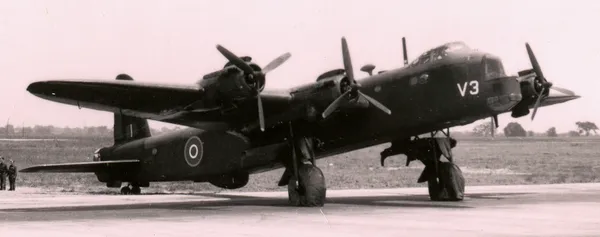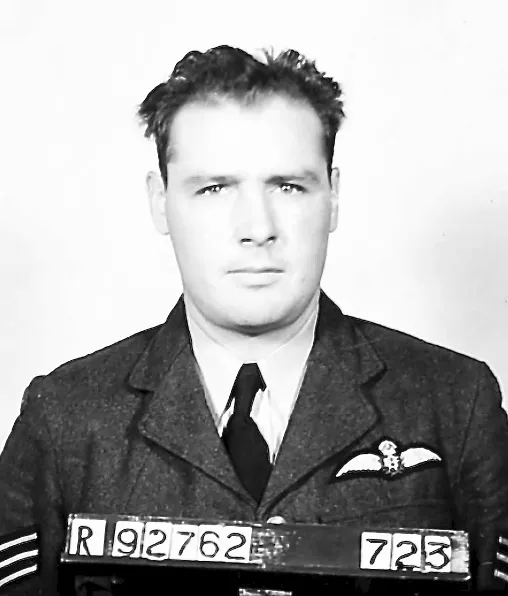Smith, James Arthur (Sergeant)
Evader 1943-04-17


Birth Date: 1921-December-30
Born: Foston, Lincolnshire, England
Home:
Enlistment:
Enlistment Date: Unknown
Service
RAFVR
Unit
214 (B) Sqn- Squadron (RAF)
Ultor In Umbris Avenging in the shadows
Base
RAF Chedburgh
Rank
Sergeant
Position
Sergeant
Service Numbers
1232112
Target
 Mannheim Germany
Mannheim Germany
Sergeant James Arthur Smith (RAFVR) and four crewmates evaded capture with the help of the French Resistance, using the Oaktree Escape Line to make his way to Gibraltar via the Pyrenees Mountains into Spain, returning safe to the UK by ship 1943-07-24
RAF Evaders, The Comprehensive Story of Thousands of Escapers and Their Escape Lines, Western Europe,1940-1945 by O0iver Clutton-Brock, pages 163-4, 400Stirling BK653
Bombing Mannheim Germany 1943-April-16 to 1943-April-17
214 (B) Sqn (RAF) RAF Chedburgh
214 Federated Malay States Squadron (Ulter in umbris) RAF Chedburgh. Stirling III aircraft BK 653 BU-A was attacked by three ME109 fighter aircraft during an operation against targets in Mannheim, Germany. The Stirling was shot down by Leutnant Norbert Pietek of 2/NJG4 and the aircraft was abandoned before crashing at Bonneuil-les-Eaux, Oise, Hauts-de-France, in France
Rear Air-Gunner Sergeant Eric Makham Lee (RAFVR) was killed in action
Mid-Upper Air Gunner Sergeant Gerard Brendan Gallahger (RAFVR) and Bomb Aimer Sergeant Clifford George Walton (RAFVR) survived and were taken as Prisoners of War
Pilot, Flight Sergeant David Eric James (RCAF), 2nd Pilot William George Grove (RAFVR), Flight Engineer James Hall (RAFVR), Wireless Operator/Air Gunner Sergeant Reginald Walter Adams (RAFVR) and Navigator James Arthur Smith (RAFVR) all survived and avoided capture as Evaders
Nachtjagd Combat Archive 1943 Part 1 1 January - 22 June by Theo Boiten, page 71Stirling BK653
Short Stirling

In June 1944, this Short S.29 Stirling B Mk. IV (Serial No. LK589), coded V3, RAF, was flown across the Atlantic as part of a navigation training exercise and did a tour of bases in Eastern Canada. It is shown here at Malton, Ontario. It was flown back to the UK after a two-week visit.
The Short Stirling was a British four-engined heavy bomber of the Second World War. It has the distinction of being the first four-engined bomber to be introduced into service with the Royal Air Force (RAF).
The Stirling was designed during the late 1930s by Short Brothers to conform with the requirements laid out in Air Ministry Specification B.12/36. Prior to this, the RAF had been primarily interested in developing increasingly capable twin-engined bombers but had been persuaded to investigate a prospective four-engined bomber as a result of promising foreign developments in the field. Out of the submissions made to the specification Supermarine proposed the Type 317, which was viewed as the favourite, whereas Short's submission, named the S.29, was selected as an alternative. When the preferred Type 317 had to be abandoned, the S.29, which later received the name Stirling, proceeded to production.In early 1941 the Stirling entered squadron service. During its use as a bomber pilots praised the type for its ability to out-turn enemy night fighters and its favourable handling characteristics whereas the altitude ceiling was often a subject of criticism. The Stirling had a relatively brief operational career as a bomber before being relegated to second line duties from late 1943. This was due to the increasing availability of the more capable Handley Page Halifax and Avro Lancaster, which took over the strategic bombing of Germany. Decisions by the Air Ministry on certain performance requirements (most significantly to restrict the wingspan of the aircraft to 100 feet) had played a role in limiting the Stirling's performance; the 100ft limit also affected earlier models of the Halifax (MkI & MkII) though the Lancaster never adhered to it.
During its later service, the Stirling was used for mining German ports; new and converted aircraft also flew as glider tugs and supply aircraft during the Allied invasion of Europe during 1944"“1945. In the aftermath of the Second World War, the type was rapidly withdrawn from RAF service, having been replaced in the transport role by the Avro York, a derivative of the Lancaster that had previously displaced it from the bomber role. A handful of ex-military Stirlings were rebuilt for the civil market.Wikipedia
 Escaper List
Escaper List Library and Archives Canada Service Files (may not exist)
Library and Archives Canada Service Files (may not exist)

 Wikipedia Short Stirling
Wikipedia Short Stirling